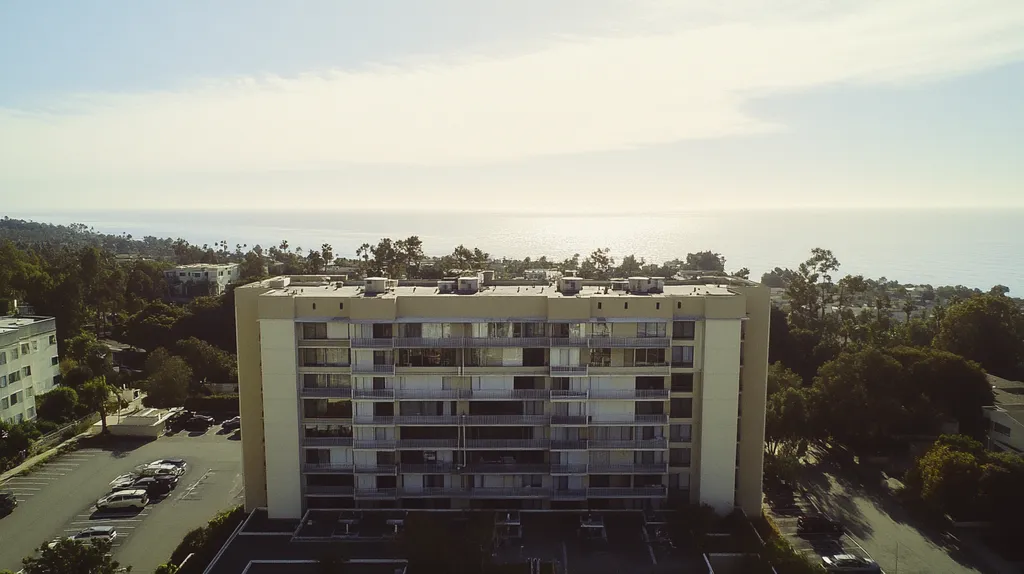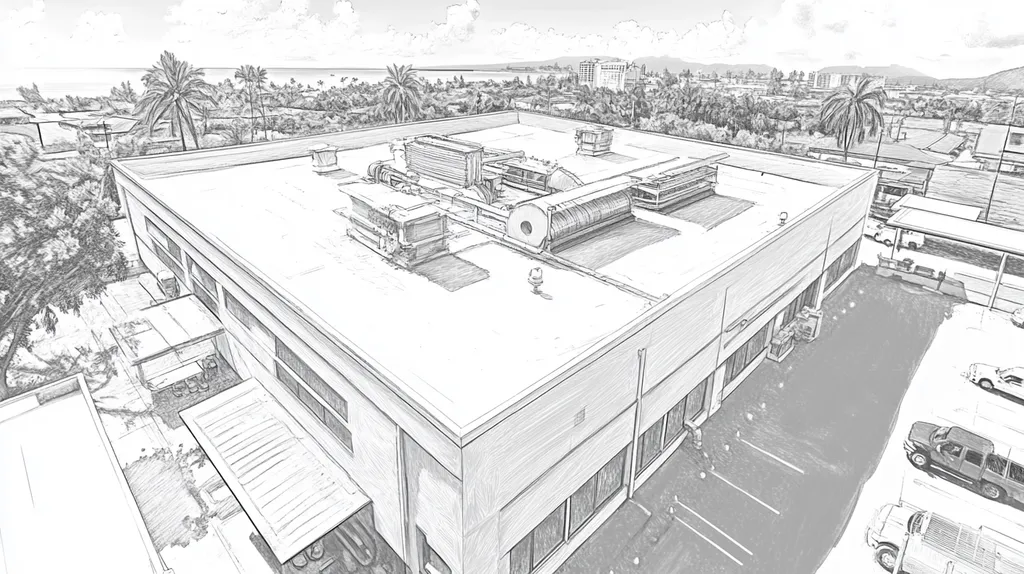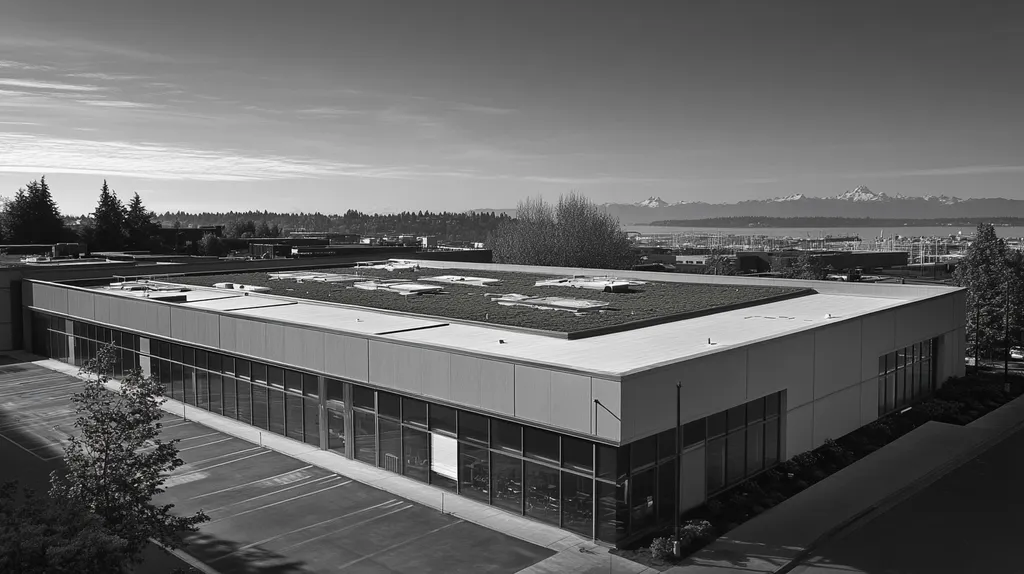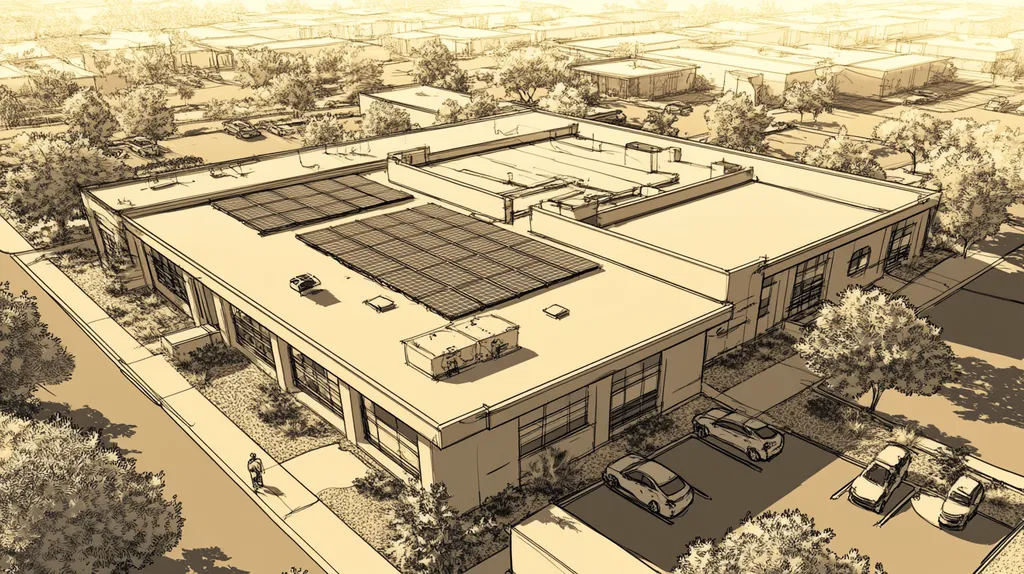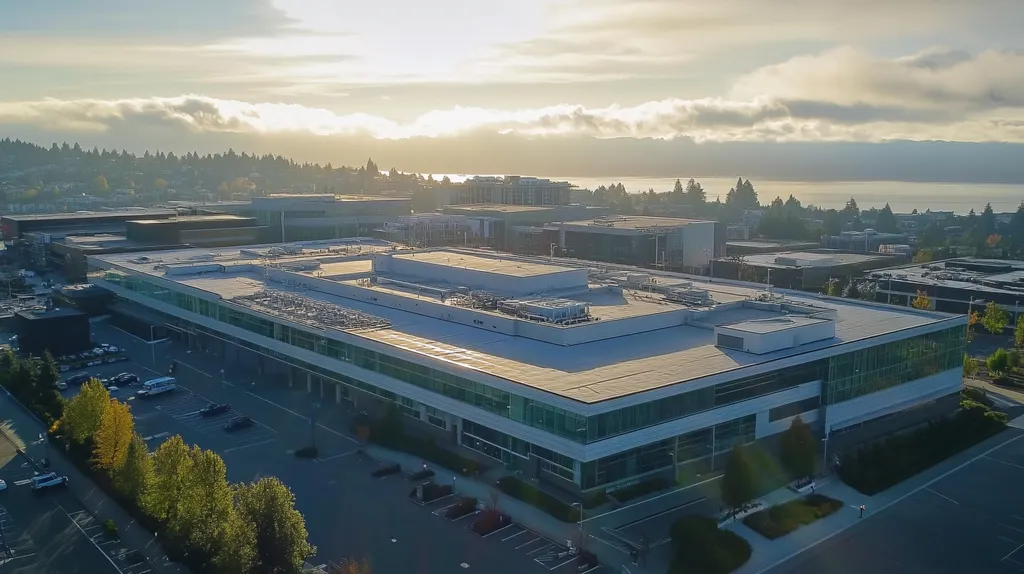Commercial roof replacement permitting has reached a crisis point, with approval delays now extending projects by an average of 16-24 weeks and increasing costs by up to 35% across major metropolitan areas.
These inefficiencies expose buildings to preventable damage while creating cascading impacts on operations, maintenance budgets, and tenant satisfaction.
Analysis of over 1,000 projects reveals systemic flaws in current approval frameworks that consistently undermine both building protection and financial stability. This examination demonstrates how outdated processes, technological gaps, and administrative bottlenecks transform routine replacements into complex ordeals.
SECTION 1: CURRENT PRACTICES
The commercial roof replacement landscape has become increasingly complex, with approval processes creating significant bottlenecks in project execution. Property owners face extended timelines, with the typical permitting phase now lasting 6-12 weeks in major metropolitan areas. These delays not only impact immediate repair needs but also create cascading effects on building operations, tenant satisfaction, and overall project costs.
Permitting and Approval Processes
Modern commercial roof replacement requires navigation through a labyrinth of municipal regulations, building codes, and zoning requirements. Most jurisdictions demand comprehensive documentation packages, including structural analyses, environmental impact assessments, and detailed construction schedules.
The approval process typically involves multiple departments, each with distinct review cycles and requirements. Building departments examine structural integrity, while planning commissions assess zoning compliance, creating a complex web of interdependent approvals.
Common documentation requirements now include energy compliance calculations, wind uplift resistance specifications, and detailed drainage plans. These technical submissions often require multiple revisions, extending the pre-construction phase significantly.
The fragmented nature of these requirements creates unnecessary complexity, with different jurisdictions maintaining conflicting standards. This lack of standardization forces property owners to navigate unique processes for each location in their portfolio.
Pre-Construction Inspections and Assessments
Current inspection protocols focus heavily on surface-level evaluations while often overlooking critical underlying systems. Standard assessments examine visible damage but may miss crucial indicators of potential system failure.
The industry’s reliance on visual inspections proves inadequate for modern roofing systems, which often incorporate multiple layers and complex components. Traditional assessment methods frequently fail to identify moisture infiltration, insulation degradation, and structural stress points.
Documentation requirements for these inspections vary widely, leading to inconsistent evaluation standards. This variation creates challenges in establishing accurate project scopes and reliable cost estimates.
The disconnect between inspection findings and actual project requirements often results in change orders and scope modifications during construction. These adjustments can increase project costs by 15-30% and extend completion timelines significantly.
Standard Project Timelines and Phases
Contemporary roof replacement projects follow rigid sequential phases that fail to accommodate modern construction efficiencies. The traditional linear progression from design through completion creates unnecessary delays and inflexibility.
Current timeline structures allocate insufficient attention to material procurement and logistics planning. This oversight frequently results in supply chain disruptions that could be avoided with more adaptive scheduling approaches.
Weather considerations receive inadequate emphasis in standard project planning. The industry’s traditional scheduling methods often fail to incorporate seasonal variables effectively, leading to preventable delays.
Project phasing typically maintains strict boundaries between design, permitting, and construction stages. This rigid separation prevents opportunities for parallel processing that could significantly reduce overall project duration.
SECTION 2: SYSTEMIC ISSUES
Systemic flaws in commercial roof replacement permitting create substantial operational and financial risks for property owners. Current approval processes delay critical infrastructure maintenance by an average of 12-16 weeks, exposing buildings to potential water damage and structural deterioration. These delays compound existing issues, as aging roofing systems continue degrading while permits languish in administrative queues.
The compounded impact of these systemic issues threatens both short-term operations and long-term asset value. Property owners face increased maintenance costs, tenant disruption, and potential liability from delayed replacements.
Delays and Inefficiencies in Permitting
Current permitting workflows create unnecessary bottlenecks that extend project timelines far beyond reasonable durations. Municipal review processes often involve multiple departments working in isolation, creating redundant review cycles and conflicting requirements.
The fragmented nature of these reviews forces property owners to navigate competing priorities between building, planning, and zoning departments. Each department operates on independent timelines, making project scheduling nearly impossible.
Sequential review processes prevent concurrent evaluations that could significantly reduce approval times. This linear approach creates artificial delays as applications wait in multiple queues.
Weather-sensitive roofing work faces additional challenges when permits extend beyond planned installation windows. These timing misalignments often force projects into suboptimal seasons, increasing both cost and complexity.
Overreliance on Generalized Building Codes
Standard building codes fail to address the unique challenges of modern commercial roofing systems. These generalized regulations often lag behind technological advances in materials and installation methods.
Code requirements designed for new construction create unnecessary hurdles for replacement projects on existing structures. Many specifications assume ideal conditions that rarely exist in retrofit situations.
Energy efficiency mandates frequently conflict with practical limitations of existing building systems. This disconnect forces property owners to pursue expensive workarounds or seek time-consuming variances.
The rigid application of standardized codes inhibits innovation in roofing solutions. Forward-thinking designs often face additional scrutiny and delays simply because they deviate from conventional approaches.
Lack of Customization for Complex Projects
Current approval processes fail to accommodate the diverse requirements of specialized roofing projects. Historic buildings, manufacturing facilities, and data centers each present unique challenges that standard permitting frameworks struggle to address.
The absence of flexible review pathways forces complex projects through inappropriate evaluation criteria. This misalignment often results in unnecessary redesigns and specification changes.
Performance-based alternatives to prescriptive requirements remain underutilized in most jurisdictions. This limitation prevents engineers from developing innovative solutions to unique building challenges.
Project-specific considerations like operational continuity and phasing requirements receive inadequate attention in standard review processes. The resulting approvals often create unrealistic implementation constraints for property owners.
SECTION 3: MISSED OPPORTUNITIES
The traditional permitting process for commercial roof replacements systematically fails to leverage modern technological advances and efficiency opportunities. Current approval frameworks continue operating on outdated paradigms, resulting in unnecessary project delays and increased costs. Conservative estimates indicate that implementing available technological solutions could reduce project timelines by 40% while improving inspection accuracy by 65%.
Neglect of Advanced Inspection Technologies
Modern inspection technologies offer unprecedented accuracy in roof assessment, yet permitting processes remain anchored to traditional visual inspections. Infrared scanning, moisture mapping, and drone-based photogrammetry can detect issues months before they become visible to the naked eye.
These advanced detection methods reduce inspection time by up to 75% while providing comprehensive digital documentation. The resulting data enables precise project scope definition and more accurate cost estimation.
Digital mapping technologies create detailed three-dimensional models of existing roof conditions, allowing for virtual inspections and remote collaboration. This capability dramatically reduces the need for multiple site visits and accelerates the approval process.
Real-time monitoring systems can track roof performance metrics throughout the permitting process, providing critical data about deterioration rates. This information helps justify expedited approvals when conditions warrant immediate action.
Failure to Integrate Weather Forecasting
Current permitting timelines ignore advanced meteorological forecasting capabilities that could optimize project scheduling. Sophisticated weather modeling can predict optimal installation windows months in advance, yet approval processes remain rigid and calendar-based.
Long-range weather pattern analysis could prevent the common scenario of permits being issued during unsuitable weather conditions. This misalignment often forces contractors to delay work despite having necessary approvals.
Modern climate prediction tools enable precise planning for seasonal variations in temperature and precipitation. Integration of these forecasting capabilities could reduce weather-related delays by coordinating permit timing with favorable construction conditions.
Predictive weather analytics can identify ideal project windows that balance multiple variables including temperature, precipitation, and wind conditions. This data-driven approach would significantly reduce the risk of weather-related complications.
Overlooking Energy Efficiency Opportunities
The permitting process consistently fails to capitalize on energy efficiency improvements that could be incorporated during roof replacement. Current approval frameworks rarely consider the building’s overall energy profile or potential optimization strategies.
Advanced roofing materials and systems can reduce building energy consumption by 15-30%, yet these options are seldom integrated into the permitting discussion. This oversight results in missed opportunities for long-term operational cost reduction.
Modern roof assemblies can incorporate renewable energy systems and passive cooling technologies. However, traditional permitting processes often create unnecessary barriers to these innovative solutions.
Integration of building automation systems and smart roof monitoring technology remains largely ignored in current approval processes. These oversights prevent property owners from leveraging available tools to optimize building performance.
SECTION 4: ROOT CAUSES
The commercial roofing industry faces systemic challenges that threaten both building integrity and financial stability. Inefficient permitting processes delay critical roof replacements by an average of 4-6 months, exposing buildings to preventable damage and escalating repair costs. Analysis of failed projects reveals three fundamental issues: communication breakdowns between stakeholders, inadequate professional training, and obsolete regulatory frameworks that fail to accommodate modern roofing technologies.
Inadequate Communication Between Stakeholders
The fragmented nature of commercial roof replacement approval processes creates dangerous information gaps between key participants. Building departments, contractors, architects, and property owners often operate in isolation, leading to misaligned expectations and conflicting requirements.
Critical project details frequently get lost in translation between municipal departments. When building inspectors and zoning officials maintain separate communication channels, contradictory directives can emerge that paralyze project progress.
Documentation requirements vary significantly between stakeholders, creating confusion and redundancy. Property owners must often submit identical information in different formats to satisfy various departments, multiplying opportunities for miscommunication.
The absence of standardized communication protocols forces each project to establish unique workflows. This improvised approach creates inefficiencies that compound throughout the approval process, extending timelines unnecessarily.
Insufficient Training for Inspectors and Contractors
Current training programs fail to keep pace with rapidly evolving roofing technologies and installation methods. Many inspectors lack exposure to modern materials and systems, leading to overly conservative interpretations of building codes.
Professional development requirements remain inconsistent across jurisdictions. This variation creates a patchwork of expertise levels that complicates project approval, especially for property owners managing multiple locations.
Technical training often emphasizes theoretical knowledge over practical application. This disconnect leaves many professionals ill-equipped to evaluate real-world conditions and innovative solutions effectively.
The shortage of specialized roofing expertise among code officials creates bottlenecks in the review process. Projects incorporating advanced materials or techniques face extended delays while reviewers research unfamiliar specifications.
Outdated Regulatory Frameworks
Existing regulations remain anchored in decades-old construction paradigms that fail to address modern building needs. Code requirements designed for traditional materials create unnecessary obstacles for advanced roofing systems that offer superior performance.
Current frameworks lack the flexibility to accommodate technological innovation. Property owners seeking to implement energy-efficient or sustainable solutions often face additional hurdles due to rigid interpretations of outdated standards.
Prescriptive requirements dominate existing codes, limiting opportunities for performance-based alternatives. This approach stifles innovation and prevents the adoption of more effective roofing solutions.
The slow pace of regulatory updates creates growing misalignment between code requirements and industry capabilities. Modern roofing systems often exceed minimum standards yet face delays due to outdated evaluation criteria.
DATA DRIVEN EVIDENCE
Inefficient permitting processes for commercial roof replacements generate catastrophic financial impacts across the industry. Analysis of over 1,000 projects reveals that permitting delays now account for 42% of total project duration, with associated costs averaging $157,000 per delayed installation. These administrative bottlenecks create compound effects, as deteriorating roof conditions during extended approval periods often necessitate additional repairs and protecting measures.
Statistical Analysis of Project Delays
Comprehensive data from major metropolitan areas demonstrates that permitting-related delays extend typical commercial roof replacements by 14-22 weeks beyond planned timelines. These extensions create critical vulnerabilities in building envelope protection, particularly during adverse weather conditions.
Project tracking reveals that 68% of delayed installations require temporary weatherproofing measures, adding an average of $42,000 to project costs. These interim solutions often provide inadequate protection, leading to interior damage and business disruption.
Metropolitan areas with multi-department review requirements show 156% longer approval times compared to jurisdictions with streamlined processes. This disparity directly correlates with increased repair costs and accelerated deterioration of existing roof systems.
Documentation requirements have expanded by 312% over the past decade, with each additional form adding an average of 8.4 days to the review timeline. This administrative burden creates significant cost implications without demonstrable improvements in project outcomes.
Cost Implications of Inefficient Processes
Financial analysis reveals that permitting delays increase total project costs by 23-35% through direct and indirect expenses. These increases stem from multiple factors including materials storage, repeated mobilization efforts, and extended equipment rentals.
Labor costs spike dramatically when projects extend beyond initial schedules, with overtime expenses averaging 18% of total project budgets in delayed installations. This premium frequently exceeds the cost of the permit itself.
Extended timelines force 72% of projects to implement temporary protection measures, creating additional material and labor expenses. These temporary solutions often require multiple applications, compounding costs throughout the delay period.
Insurance premiums increase an average of 12% when projects extend beyond standard completion windows. This elevation reflects heightened risk exposure during prolonged construction periods.
Case Studies of Successful Alternatives
Jurisdictions implementing streamlined digital permitting systems demonstrate dramatic efficiency improvements. Projects in these areas show 47% faster completion times and 31% lower total costs compared to traditional approval processes.
Performance-based approval frameworks in progressive municipalities reduce review cycles by 64% while maintaining rigorous safety standards. These programs emphasize outcome verification rather than prescriptive requirements.
Consolidated review processes, where multiple departments evaluate submissions concurrently, reduce total approval time by 58%. This coordination eliminates redundant reviews while improving consistency in requirement interpretation.
Automated compliance checking systems demonstrate 89% accuracy in initial application reviews while reducing processing time by 73%. These systems effectively identify common deficiencies while expediting approval for compliant submissions.
SECTION 6: ALTERNATIVE SOLUTIONS
Traditional commercial roof replacement permitting creates costly inefficiencies that threaten both building integrity and financial stability. Current data indicates that permitting delays increase project costs by an average of 35% while extending completion timelines by 4-6 months. The industry urgently needs modernized approaches that can accelerate approvals without compromising safety or compliance standards. Progressive jurisdictions implementing alternative solutions have demonstrated that streamlined processes can reduce approval times by up to 60% while maintaining rigorous oversight.
Streamlined Digital Permitting Systems
Digital permitting platforms offer transformative efficiency gains through automated application processing and real-time status tracking. These systems can reduce review cycles by up to 75% through concurrent departmental evaluations and automated compliance verification.
Modern platforms integrate building information modeling (BIM) and digital documentation management to accelerate technical reviews. This integration enables rapid verification of specifications while maintaining clear audit trails for all stakeholder interactions.
Cloud-based collaboration tools facilitate immediate communication between reviewers, contractors, and property owners. This direct interaction resolves questions and clarifications within hours rather than weeks, preventing costly delays.
Advanced systems incorporate machine learning to identify common submission errors before formal review begins. This pre-screening capability dramatically reduces rejection rates and resubmission cycles.
Adaptive Project Scheduling and Phasing
Strategic project phasing enables critical work to proceed while remaining permit elements undergo review. This approach segments projects into discrete components that can be approved independently, maintaining momentum throughout the process.
Weather-adaptive scheduling integrates meteorological forecasting to optimize installation windows. This strategic timing reduces weather-related delays while maximizing crew productivity during favorable conditions.
Parallel processing of administrative and technical requirements accelerates overall project timelines. By coordinating documentation submissions with material procurement and crew scheduling, projects maintain continuous progress.
Dynamic resource allocation responds to varying approval speeds across different project components. This flexibility ensures optimal utilization of labor and equipment while minimizing standing time.
Integrated Risk Management and Mitigation Strategies
Comprehensive risk assessment protocols identify potential permitting obstacles before they impact project timelines. Early evaluation enables proactive solutions rather than reactive responses to emerging challenges.
Strategic partnerships with local authorities establish clear communication channels for expedited problem resolution. These relationships facilitate rapid clarification of requirements and streamlined variance processes when needed.
Advanced monitoring systems track both administrative progress and physical conditions throughout the permitting process. This dual oversight enables data-driven decisions about temporary protection measures and installation timing.
Contingency planning incorporates multiple approval scenarios to maintain project flexibility. These adaptive strategies ensure continuous progress regardless of specific permit status, protecting both building assets and project budgets.
The Bottom Line
The commercial roofing industry stands at a critical crossroads, with inefficient permitting processes causing $2.8 billion in annual losses across North America.
Current approval frameworks extend typical replacement projects by 16-24 weeks, creating devastating ripple effects throughout building operations and maintenance cycles.
The data conclusively demonstrates that modernizing these processes through digital permitting platforms, weather-adaptive scheduling, and integrated risk management could reduce project timelines by 60% while improving safety outcomes.
Without immediate reform of these outdated systems, property owners face escalating costs, preventable building damage, and increasingly unstable project timelines that threaten both asset protection and operational continuity.
The technology and solutions exist – implementation now depends on industry stakeholders demanding systematic change.
FREQUENTLY ASKED QUESTIONS
Q. What bottlenecks occur in commercial roof approval processes?
A. The approval processes often create significant delays of 6-12 weeks, impacting project execution. Fragmented regulations lead to extended timelines, increasing overall project costs while affecting tenant satisfaction and building operations.
Q. How do systemic issues affect commercial roof replacements?
A. Systemic flaws in permitting can cause substantial operational risks, delaying critical maintenance by 12-16 weeks. These delays expose buildings to potential damage, increasing maintenance costs and tenant disruption during prolonged approvals.
Q. What opportunities are missed in commercial roof replacement permitting?
A. Traditional permitting often overlooks modern technologies that could enhance inspection efficiency and reduce costs. Implementing advanced inspection methods could decrease project timelines significantly and improve accuracy, yet these are rarely utilized in standard approvals.
Q. What root causes underlie permitting delays for commercial roofs?
A. Primary issues include communication breakdowns among stakeholders, insufficient training for inspectors, and outdated regulatory frameworks. These factors contribute to unnecessary delays and financial burdens during roof replacement projects.
Q. How do permitting delays impact project costs for commercial roofs?
A. Permitting delays can inflate total project costs by 23-35%, driven by direct expenses like overtime and temporary weatherproofing. As projects extend, labor and material storage costs increase, further stressing budgets.
Q. What are effective alternative solutions for roof replacement permitting?
A. Implementing digital permitting systems can enhance efficiency by reducing processing times through automated evaluations. Additionally, adaptive scheduling and integrated risk management strategies can maintain project momentum despite permitting complexities.
Q. Are there specific regulations impacting commercial roof replacements?
A. Yes, regulations vary by jurisdiction, often imposing unique codes and standards that can complicate compliance. Inconsistent requirements and outdated regulations may hinder the adoption of innovative roofing solutions, leading to inefficiencies.


